Bass Rock
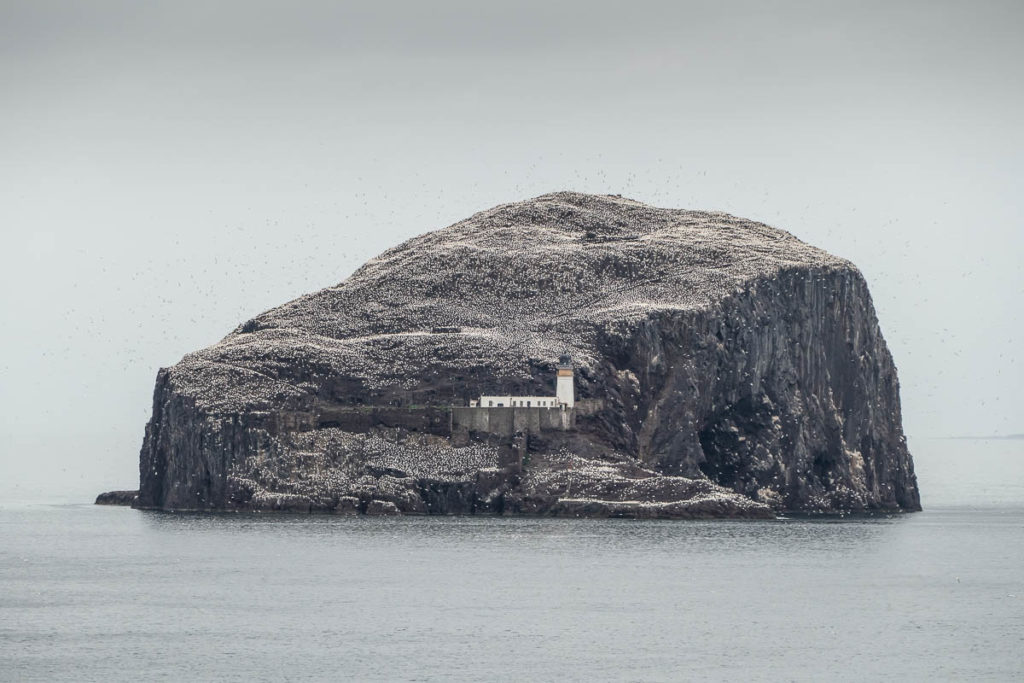
The wind had been up, it had rained for the last few days and we were not hopeful that our longed booked trip over to Bass Rock would go ahead.
An Island one mile off shore in the Firth of Forth and three miles from our departure point at North Berwick, Bass Rock is a place like no other I’ve ever been to.
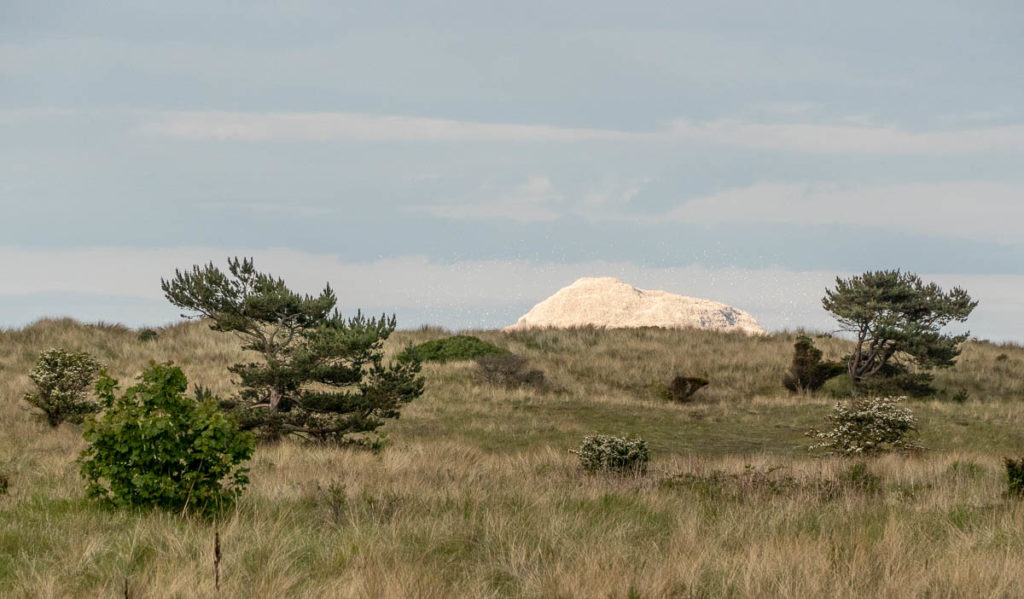
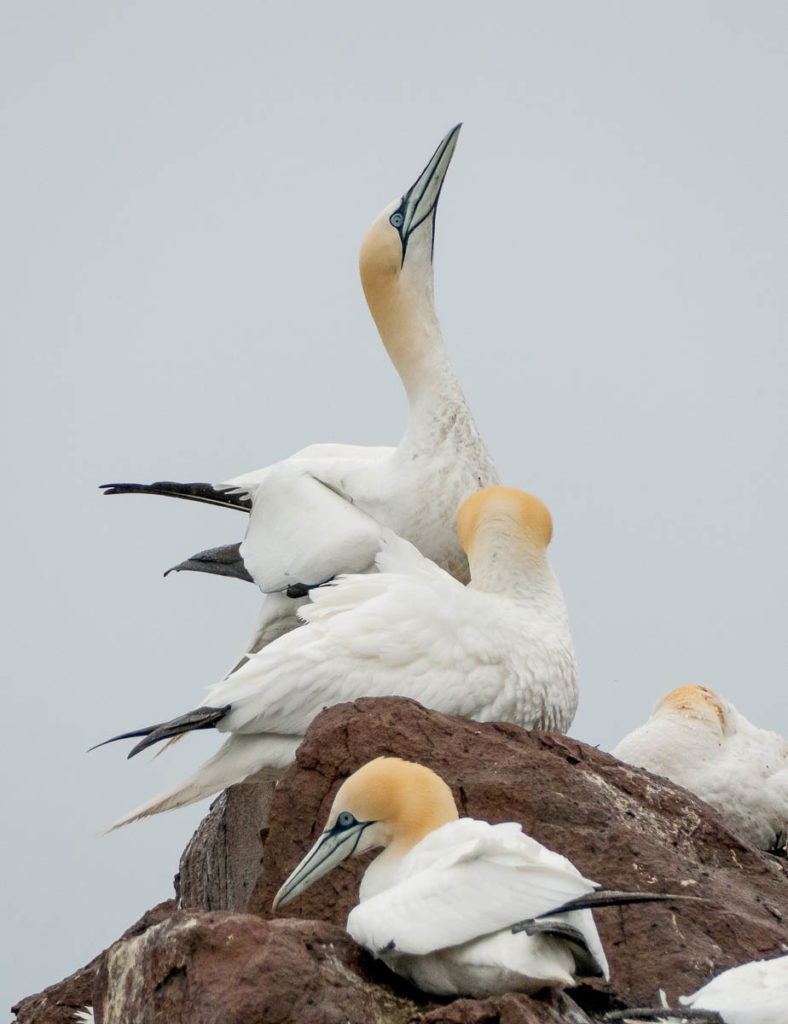
5.45am at North Berwick and dull but no rain as yet. Maggie, our guide, arrived soon after and was still unsure about getting over. Rain was forecast, again! and not only might the crossing be difficult but the Rock itself would be challenging to get onto due to conditions underfoot, so it was with some relief that we boarding that boat and got underway. With only seven folk making the trip we were never going to feel ‘overcrowded’ like we did a couple of weeks later when we visited the Farnes.
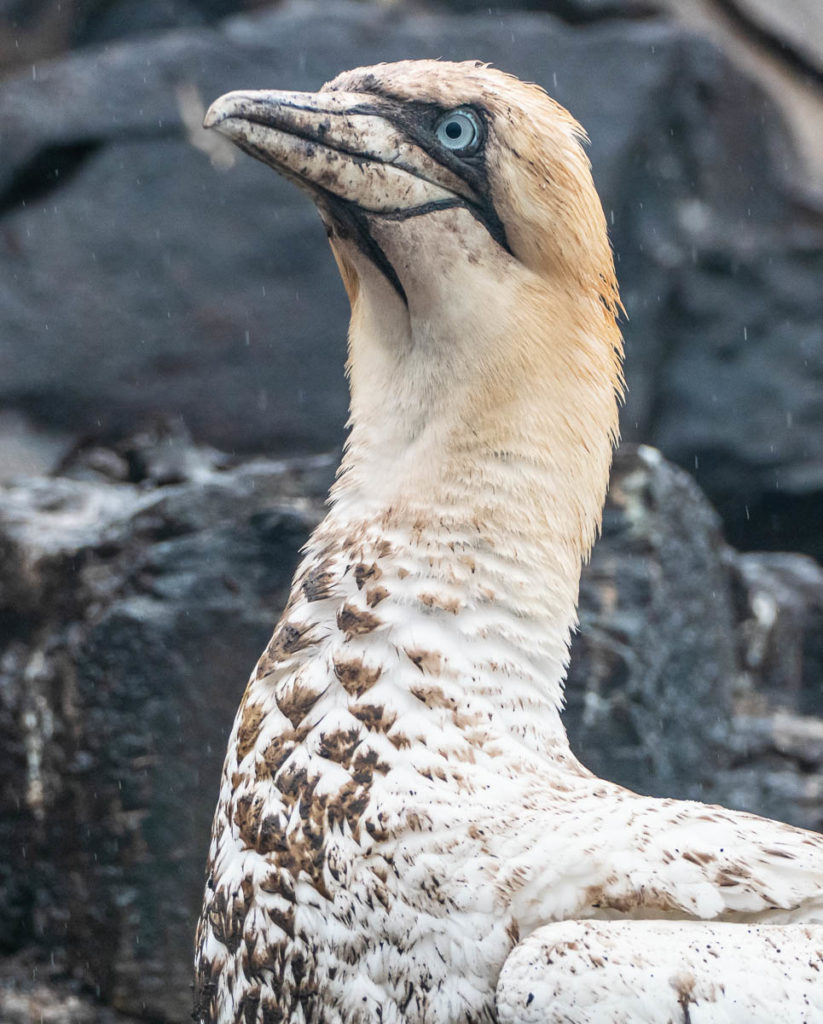
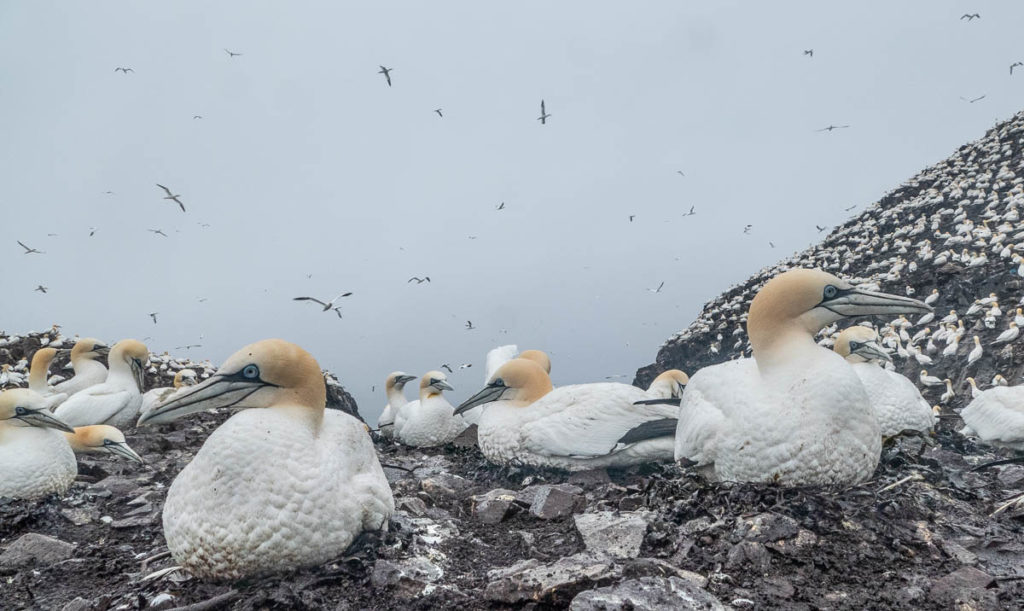
Fifteen minutes later, having sailed through increasingly Gannet filled skies, we were disembarking on a stairway hewn out of the rock with the boat lurching and rising on progressively turbulent waters.
As you get closer to ‘the Rock’ you begin to realise that you are entering a domain that, although once having a significant human presence, is of a different world. A world that as a species we don’t belong to. Interlopers at best and tolerated as long as you stay to clearly marked paths up to the remains of St. Baldreds Chapel.
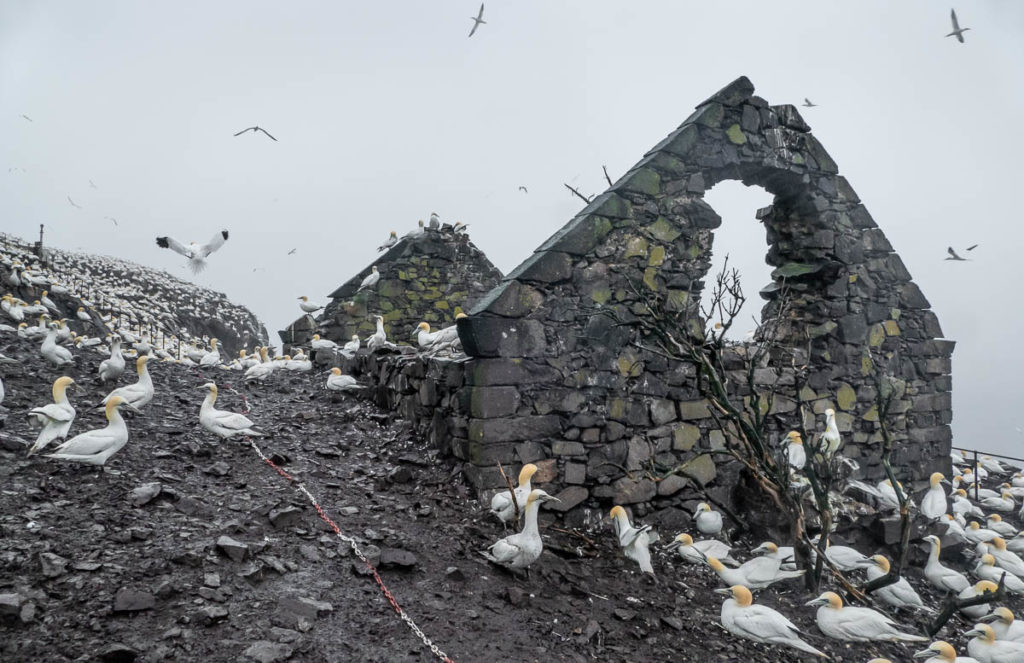
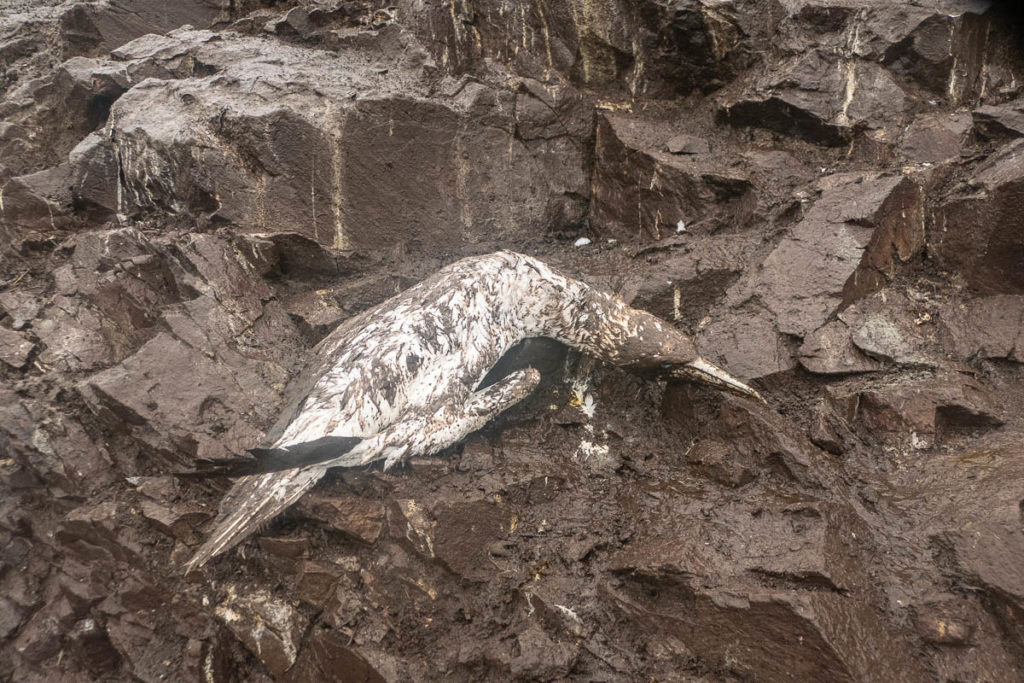
Morus bassanus
150,000 Gannets (hard to process) make it the biggest single rock gannetry in the world and it was here that ornithologists in the nineteenth century gave the scientific name Morus bassanus to the Northern Gannet after the Bass Rock.
It’s a volcanic trachyte plug that soars 313 feet out of the firth of Forth. From the land it suddenly looms on horizons as something not out in the Forth but as part of the mainland, scale and distance blur until you rise high enough to glimpse it within the context of the sea which realigns the senses.
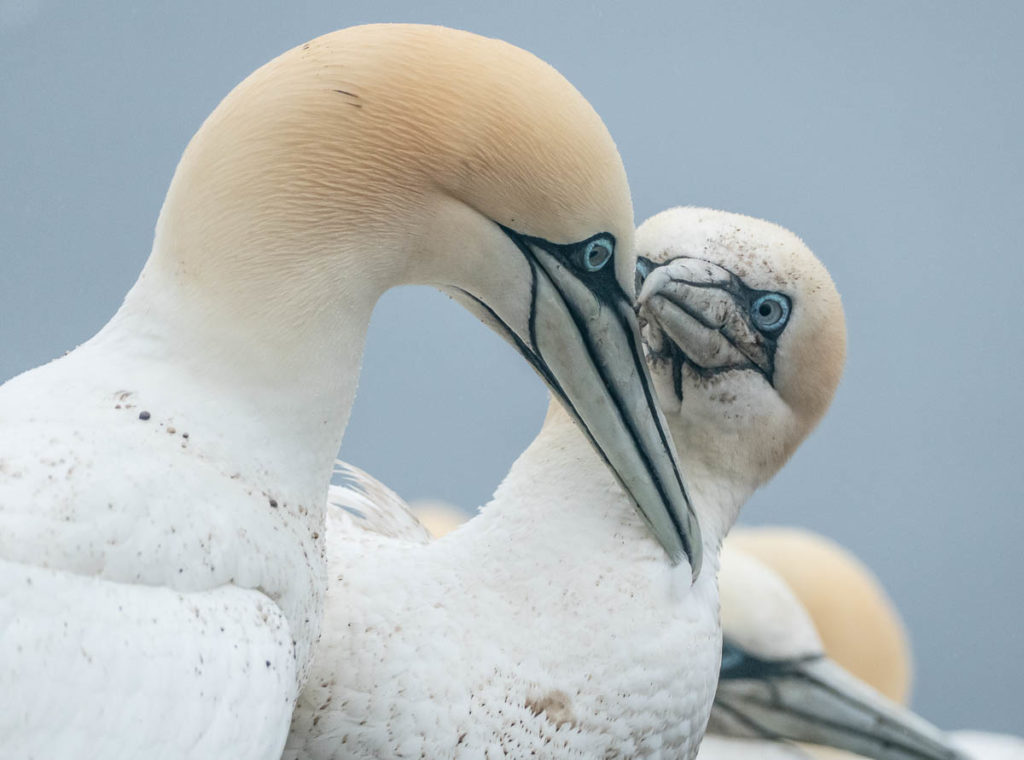
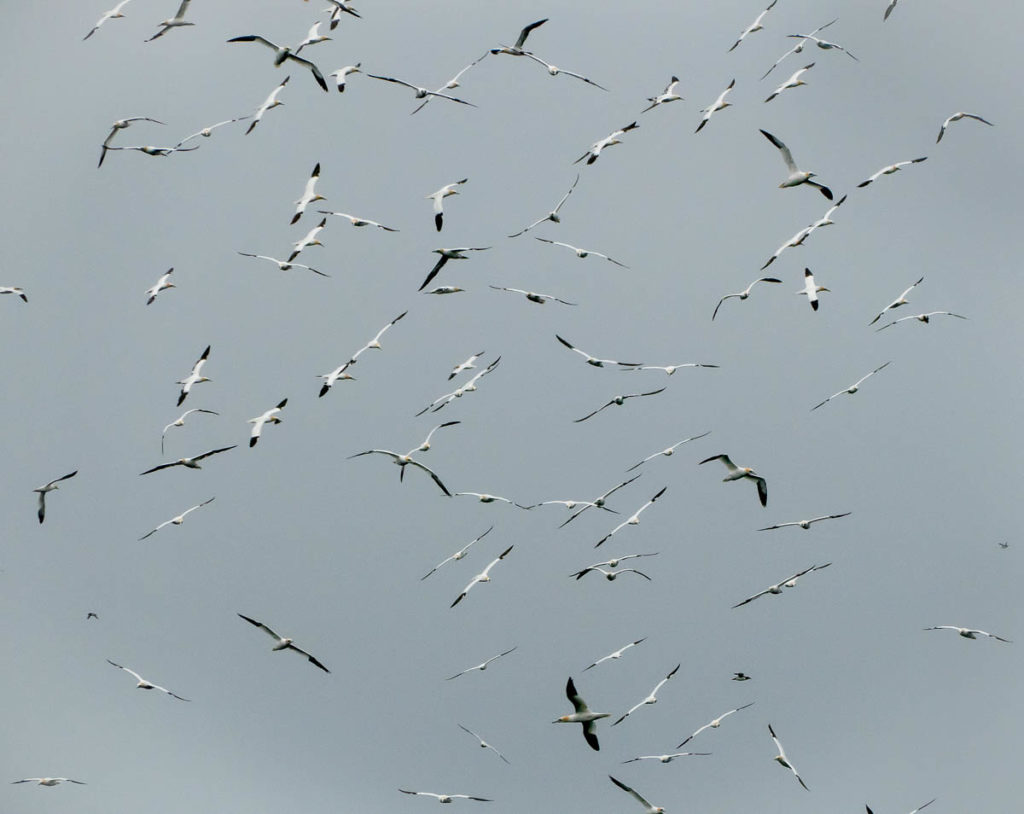
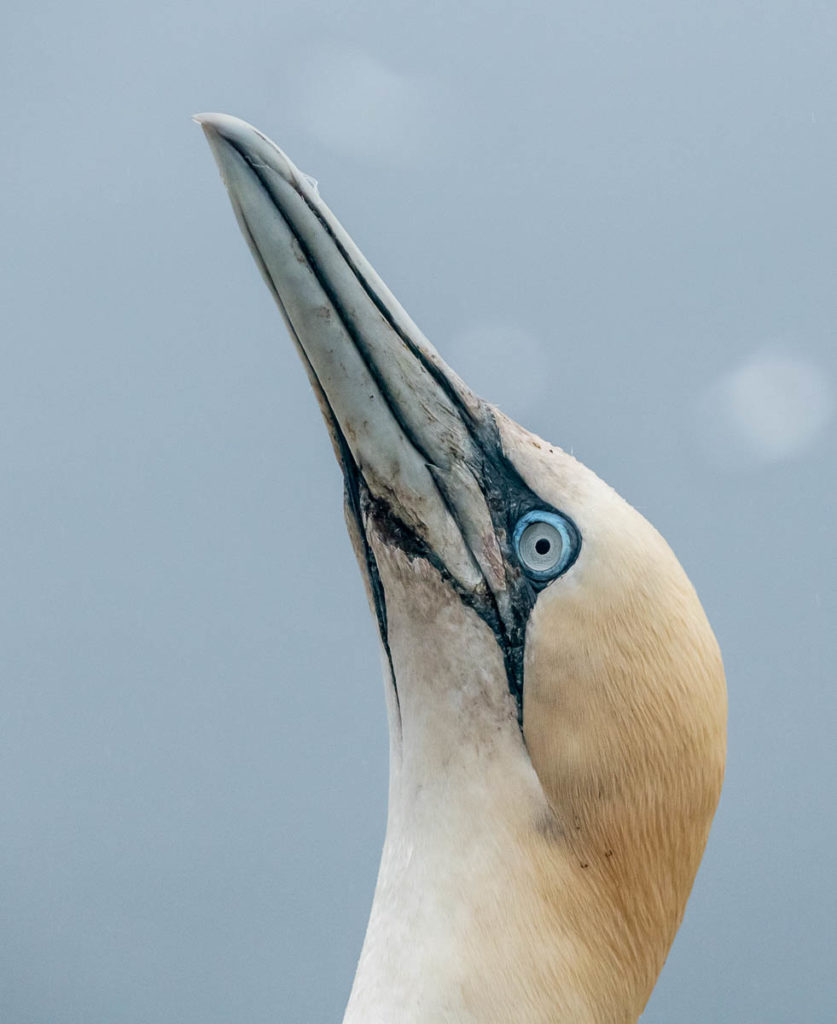
It is extraordinary, a wildlife spectacle that would be hard to beat world wide. Today it was wet and overcast, the North Berwick coastline blanked out by low rain filled clouds. It seemed to heighten the remoteness and other worldly quality that ‘the Rock’ possessed. We had four hours before the boat would return us to our mortal world. Four hours with thousands of the largest seabirds in the North Atlantic with a wingspan of over six feet. So close to them, touching distance, although neither allowed or recommended. It’s not hard to see how easy prey they were for countless generations of Islanders across the world, their Latin name morus coming from the Greek ‘moros’ meaning ‘foolish’ which relates to how easy they could be approached and killed for food.
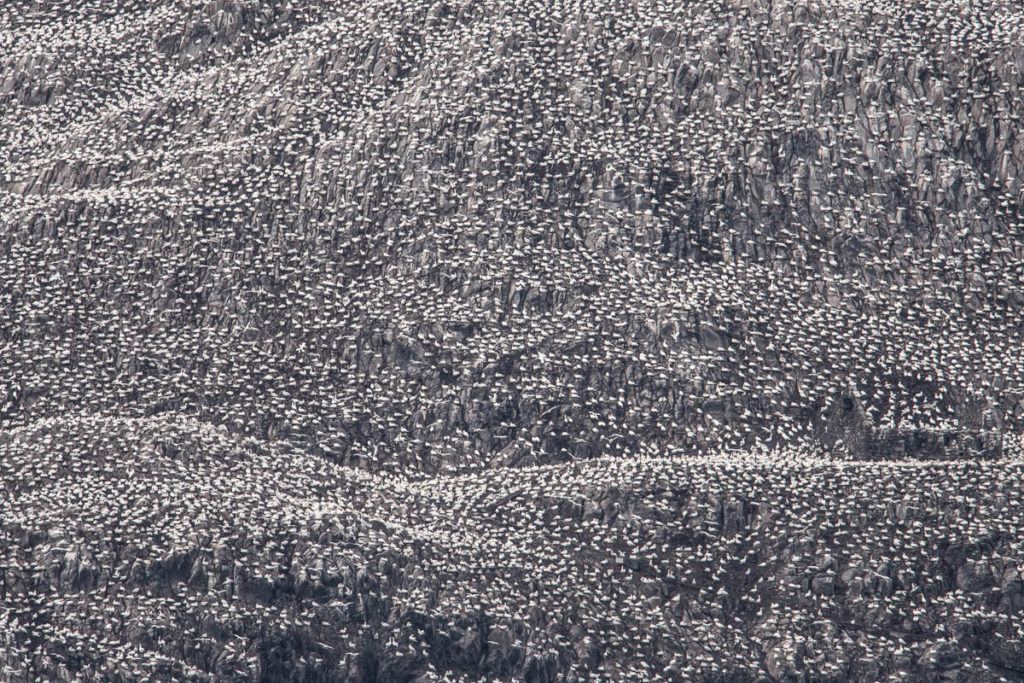
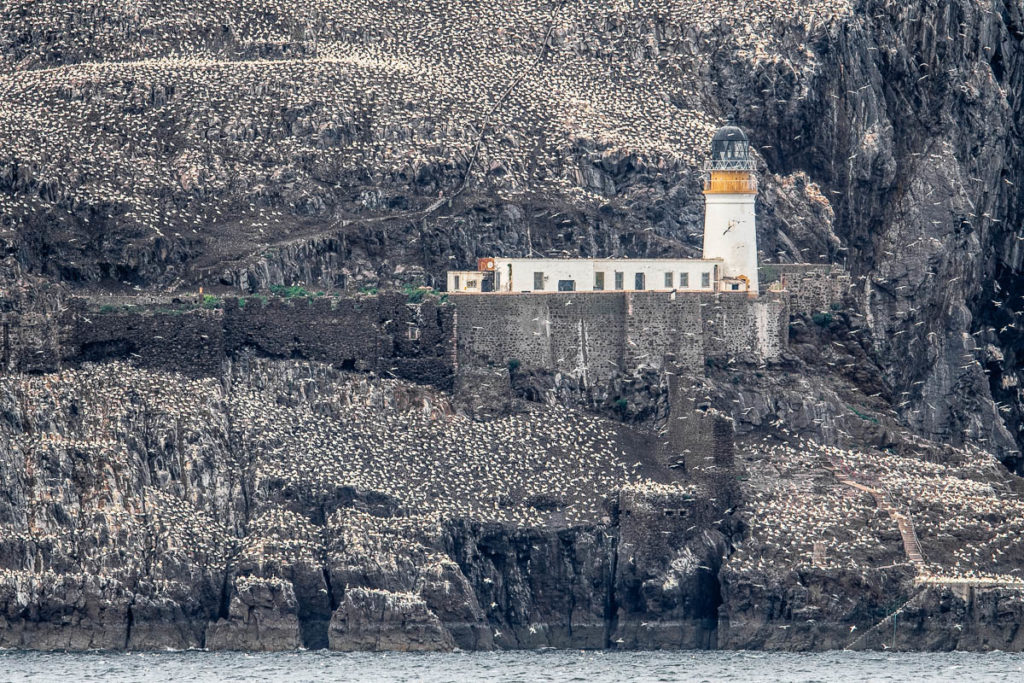
Constant raucous almost dull metallic calls filled the space everywhere and again the dull weather held it close and with the sharp back of the throat smell of guano there was no hiding place with all senses forced into overdrive. This was an intimate occurrence with an active massive colony that showed all sides of bird behavior in both life and death.
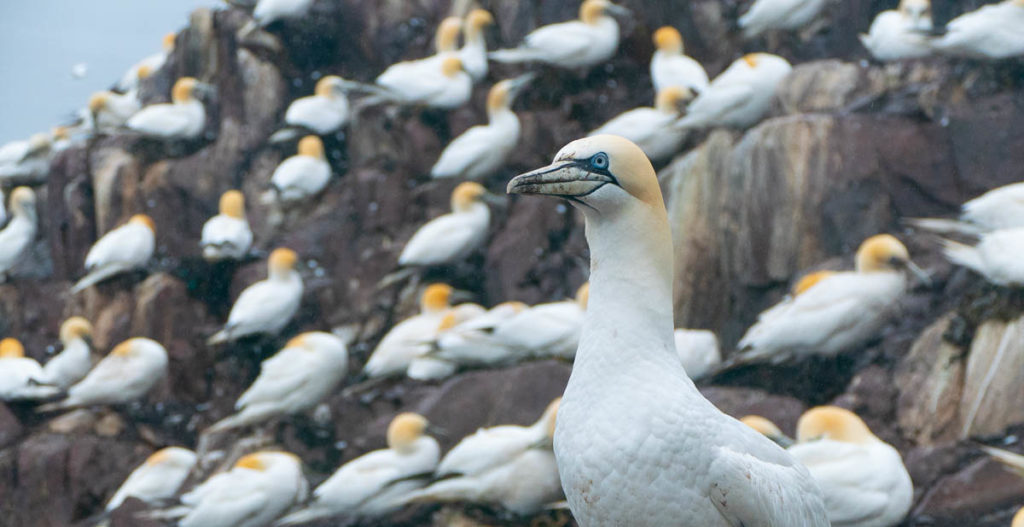
No need for long lenses here and I was happy to work with my Lumix and a sound recorder. I also ensured I had time enough to absorb this unique phenomenological experience.
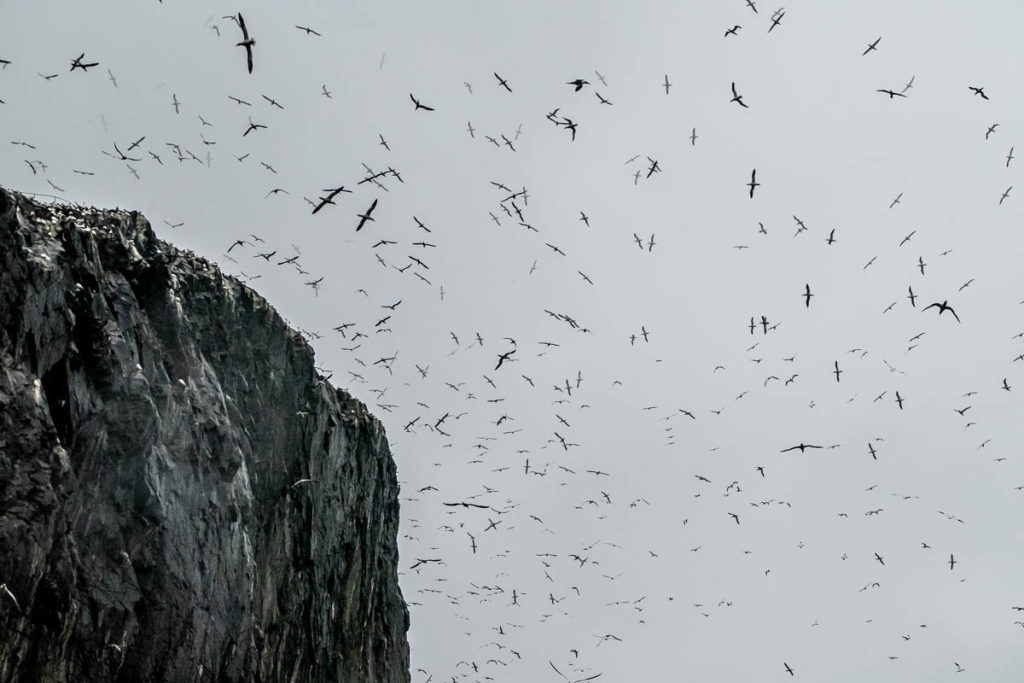
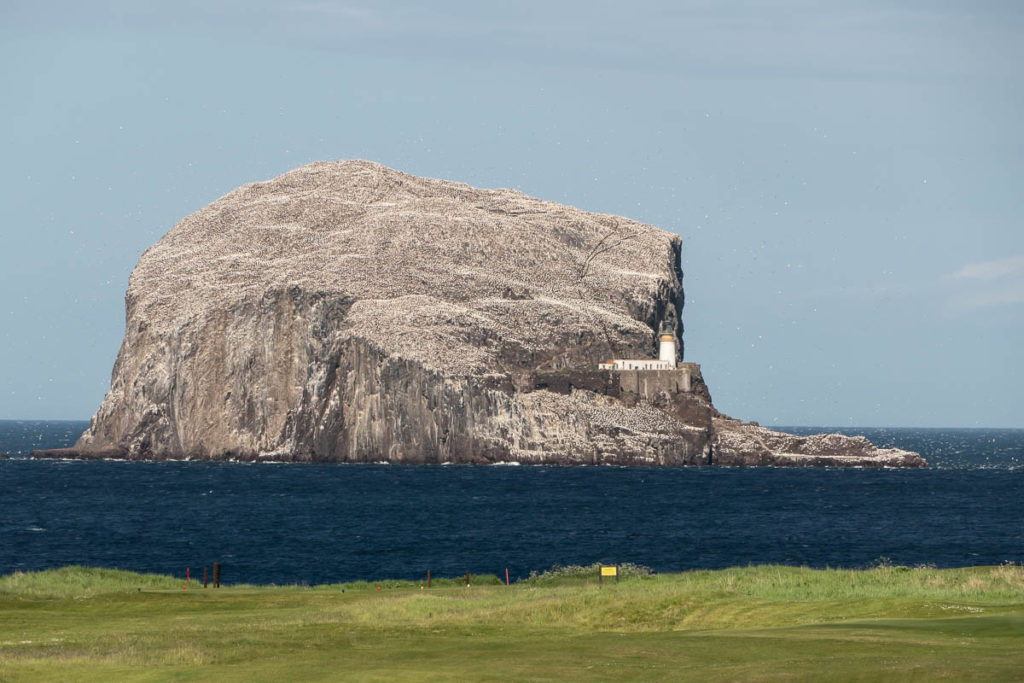
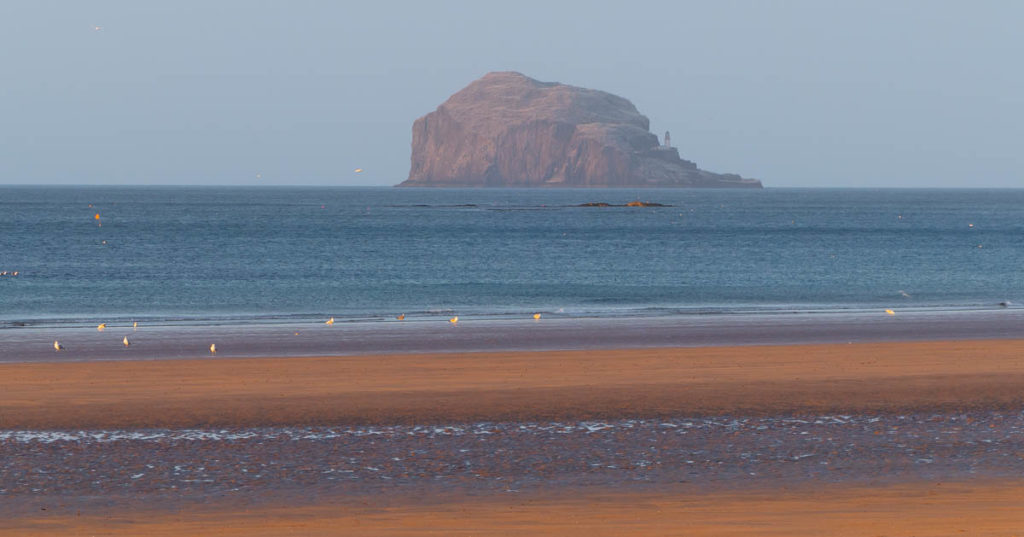
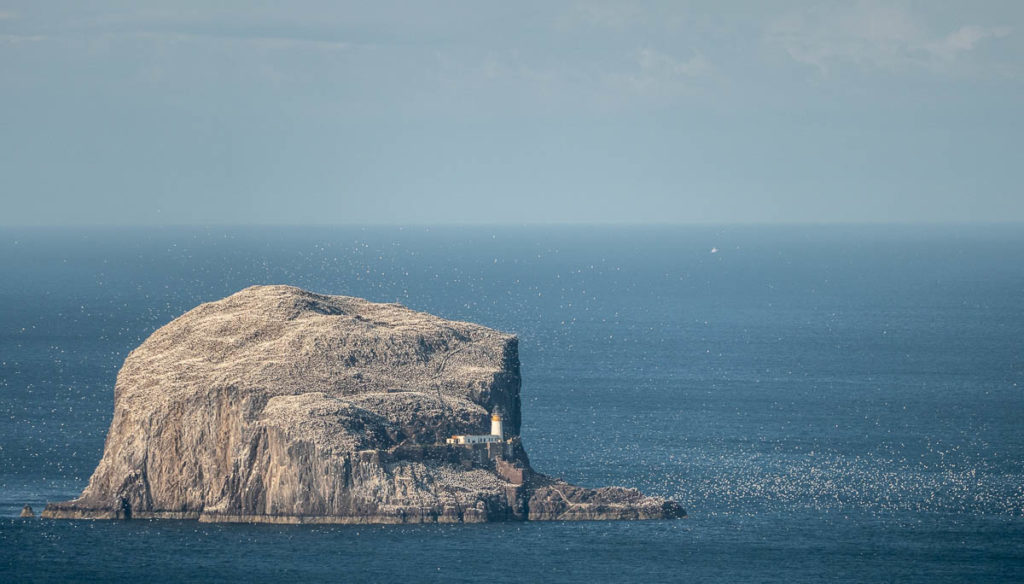
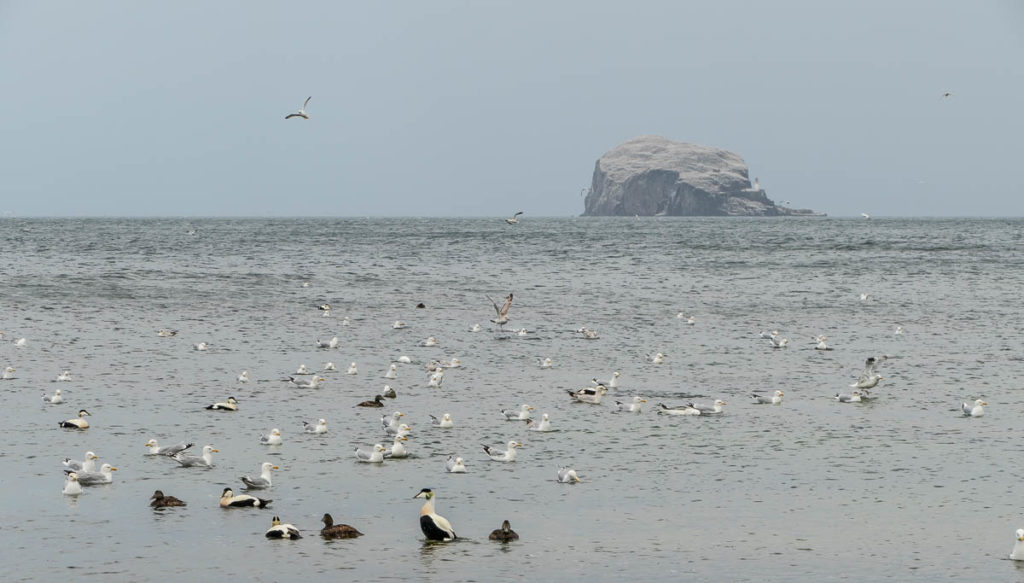
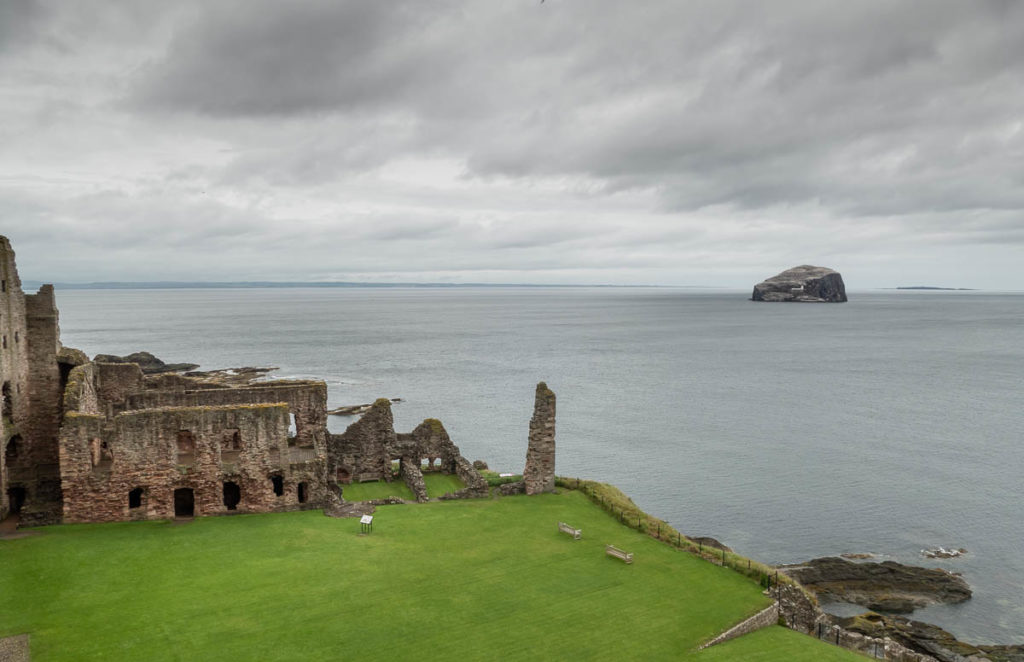
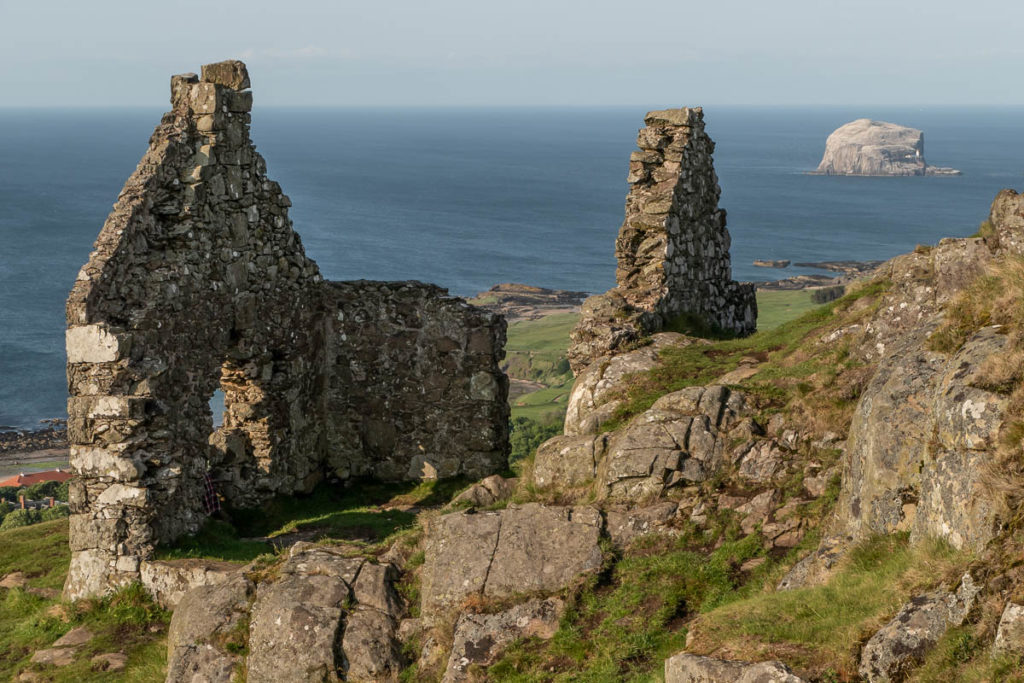
Bass Rock dominates this part of the coast like no other island I know of dominates the surrounding land and seascape, Ailsa Craig maybe hints at it. It is ever present and ever changing. We were there for just over a week and it never presented the same aspect each time we were in its presence.

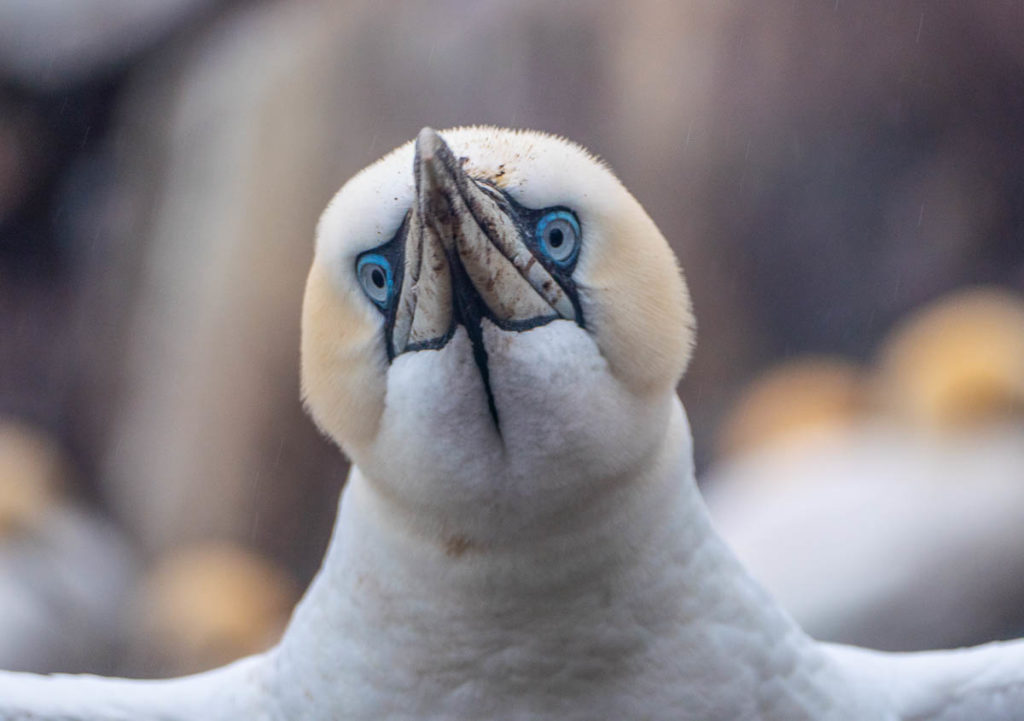
amazing as always, can’t believe how many there are on that rock!
Cheers Andy
Nice to see some new stuff mate ! I’ll read it in full later – i’m In the hide at the moment freezing my tits off , waiting for a fox to turn up ,
Good Luck!! Mad as ever, must catch up soon – too long!
Waw I love this post! The first photograph of the rock is stunning, almost post apocalyptic-y but still beautiful. And it’s nice to see some rugged looking gannets, all muddy and weather beaten. Definitely want to visit here when I’m back in the UK!